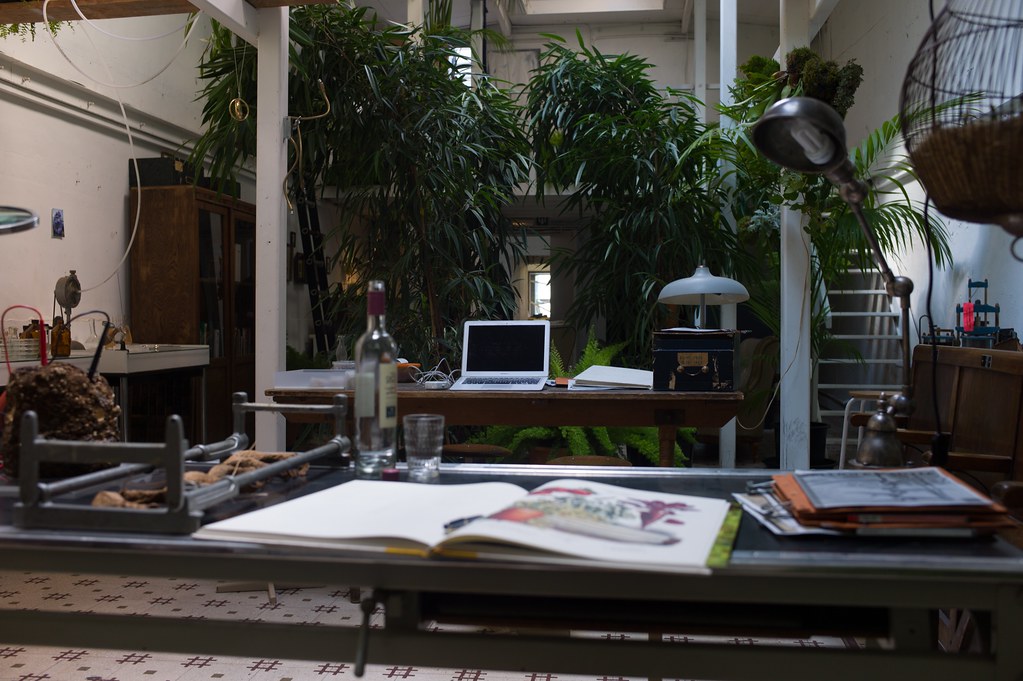Table of Contents
Grow Your Own Patabotanical Lab
Mission by Alchemilla 'Lily' Umiliata
The lab is the hub where patabotanical fieldwork begins and ends. It consists of a working space, lounge, library and resting area. This hub can be built up gradually as an outcome of the activities taking place within it, and so can start out being quite sparse, with just the bare essentials for fieldwork – a few maps and other research materials. Over the course of weeks or months the lab can evolve into a physical archive of patabotanical works and activities.
Time in the patabotanists' reality is smeared out, so their 'now' encompasses the nineteenth, twentieth and twenty-first centuries. When building a lab in 'this' reality, make sure to include elements and technologies from all the various time periods of the patabotanical reality. Creating the right atmosphere is crucial to the success of patabotanical work and their cargo cults.
Space to occupy
- whatever space you have at your disposal
Materials to borrow
Depending on the size of the space and availability of materials:
- a few lab tables and stools
- a Victorian sofa
- a few old leather armchairs
- a book case with a lock and a glass front
- a low table
- red velvet curtains for the entrance
- old optical/mechanical/digital/biotech equipment
- a wet lab and glassware
- glass display cases
- blackboards (can be painted on the wall)
- 1 printer/copier
- 2 projectors ~2000 lumen, as energy efficient as possible
- 1 PA sound system and cabling (ending in 1 minijack connector): physical dimensions as small as possible
- 1 ethernet connection (as fast as available) and 8-port switch
- sufficient extension cords and powerboards
- fixtures for wall hangings (maps, prints, etc.)
- plants in pots of various sizes (as many as possible)
Note that all materials and equipment should be reused, recycled and if possible borrowed or scavenged.
People to find
- 1 host
- research assistants for lab setup, experiments and field work (as many as you can find)
- urban farmers, plant carers from the botanic gardens, scientists from local biology and plant science departments, ethnobotanists, nature guides, guerrilla gardeners, seed savers, pataphysicists, gamers, writers, photographers, graphic designers, meditators, cooks and other plant enthusiasts, for involvement in mapping and other fieldwork
Details
- Estimated duration: depending on complexity from a few days to a few months
- Estimated number of participants: at least 2
- Vegetal mindfulness: saracenia

